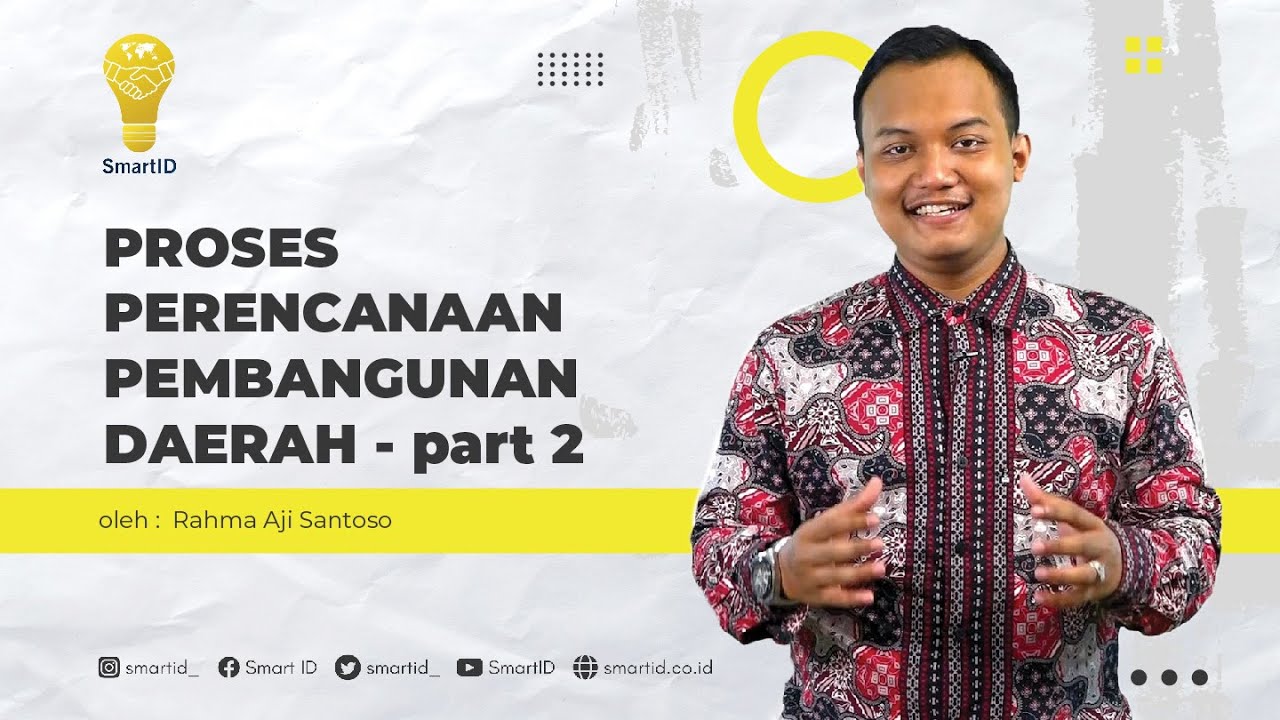Tools and Methods for Participatory Planning
Summary
TLDRThe speaker discusses participatory planning methodologies, emphasizing the importance of engaging diverse community stakeholders in the planning and decision-making process. The presentation highlights the benefits of participatory methods, such as fostering democratic governance, building public trust, and ensuring inclusion of marginalized groups. It outlines various participatory tools like public meetings, social media, surveys, and citizen science, tailored to different project types. The speaker also details how these methods can vary based on the project's objectives, participants, and contextual factors like time and budget, concluding with examples of how these tools have been applied in urban planning projects.
Takeaways
- 😀 Participatory planning is a methodology focused on engaging diverse stakeholders, community members, and local organizations in the decision-making process.
- 😀 The approach enhances **democratic governance**, strengthens civil society, and helps deliver projects more effectively by fostering consensus.
- 😀 Participatory planning is used in various stages, including project evaluation, implementation, and planning, and is interconnected within an overall methodology.
- 😀 It ensures **inclusivity** by integrating often overlooked inputs from local communities and minority groups, promoting diversity in decision-making.
- 😀 Participatory methods include **public meetings**, **surveys**, **focus groups**, **citizen science**, and **crowdsourcing**, which can be combined depending on the project's goals and resources.
- 😀 Different methods are suitable for different contexts, whether dealing with **students**, **minority groups**, or **highly educated participants**.
- 😀 Time, budget, and the project's scope are crucial considerations when selecting appropriate participatory methods, as these factors affect the feasibility and efficiency of the process.
- 😀 The **participation ladder** outlines different levels of participation, from **manipulation** to **citizen control**, with the goal of reaching empowerment in the decision-making process.
- 😀 Digital tools like **social media** and **virtual meetings** help in broadening participation but may not be suitable for all groups, especially those without access to technology.
- 😀 **PPGIS** (Participatory Geographic Information Systems) and **crowdsourcing** are advanced methods that enable communities to contribute data and ideas, especially useful in urban planning and large-scale projects.
Q & A
What is the main focus of the presentation?
-The presentation focuses on participatory planning methodology, emphasizing the processes, tools, and methods used in involving diverse stakeholders in decision-making, rather than focusing on technology.
Why is participatory planning important?
-Participatory planning is important because it fosters democratic governance, strengthens local communities and civil society, ensures inclusion of often overlooked groups, and helps projects gain broader support, making them more effective and efficient.
What are the key benefits of using participatory methods?
-The key benefits include improved democratic governance, strengthened community capacities, better program delivery, increased public confidence and trust, a deeper understanding of public issues, and the incorporation of diverse knowledge and expertise into decisions.
What factors should be considered when choosing participatory methods?
-The factors to consider include the objectives of the project, the scope and topic, the target participants, time constraints, and budget. These elements help determine which methods are most appropriate for achieving the desired outcomes.
How does time impact participatory planning?
-Time is crucial because extended engagement with stakeholders increases the time required for a project. Since participation can be a time-consuming process, balancing the time available with the level of engagement is essential to ensure efficiency.
What is the role of technology in participatory planning?
-Technology plays a supporting role, particularly through digital tools like social media and online platforms, which facilitate engagement, data collection, and communication. However, it’s not the central focus of participatory planning, which relies more on physical interaction with communities.
Can participatory methods be used in different stages of a project?
-Yes, participatory methods can be used in various stages, including project evaluation, implementation, and planning. They are flexible and can be adapted depending on the specific phase and goals of the project.
What is the significance of 'mutual learning' in participatory planning?
-Mutual learning refers to the process where both planners and participants share knowledge and insights, benefiting from the exchange. This collaborative learning improves the design and outcomes of the project, ensuring that different perspectives are considered.
What are some common participatory methods used in community engagement?
-Common participatory methods include social media for awareness and feedback, public meetings for gathering large groups, interviews and focus groups for in-depth information, surveys, citizen science, community mapping, and crowdsourcing ideas.
How do focus groups and surveys help in participatory planning?
-Focus groups and surveys are used to gather detailed opinions and feedback from specific groups or the general public. They provide insights into people's views on specific topics, allowing planners to target solutions more effectively and ensuring a more inclusive process.
Outlines

Этот раздел доступен только подписчикам платных тарифов. Пожалуйста, перейдите на платный тариф для доступа.
Перейти на платный тарифMindmap

Этот раздел доступен только подписчикам платных тарифов. Пожалуйста, перейдите на платный тариф для доступа.
Перейти на платный тарифKeywords

Этот раздел доступен только подписчикам платных тарифов. Пожалуйста, перейдите на платный тариф для доступа.
Перейти на платный тарифHighlights

Этот раздел доступен только подписчикам платных тарифов. Пожалуйста, перейдите на платный тариф для доступа.
Перейти на платный тарифTranscripts

Этот раздел доступен только подписчикам платных тарифов. Пожалуйста, перейдите на платный тариф для доступа.
Перейти на платный тарифПосмотреть больше похожих видео
5.0 / 5 (0 votes)






